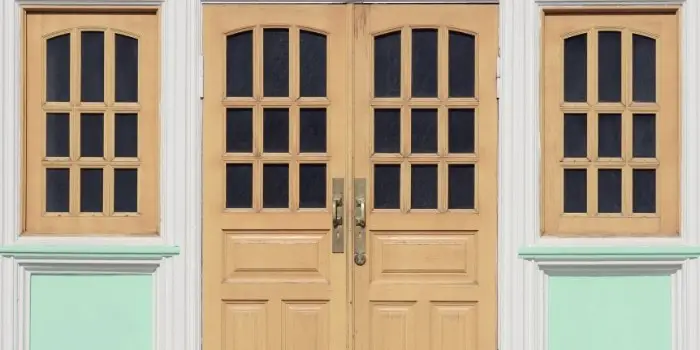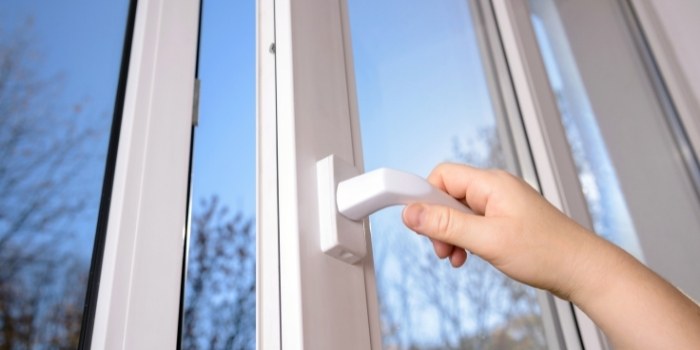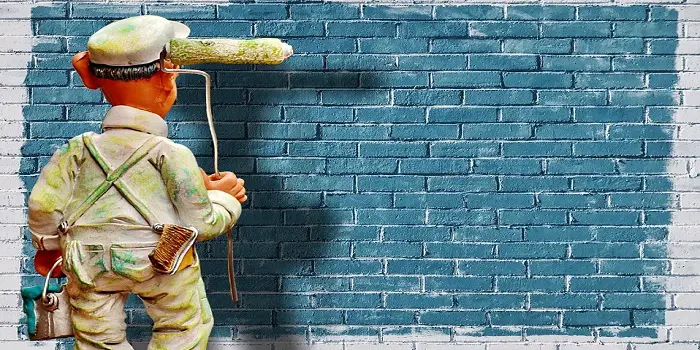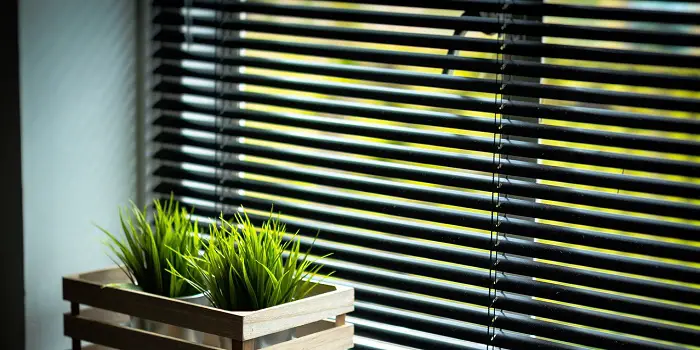
Every time you paint your doors or windows, it makes the house so new and fresh. But, alas, that feeling fades quickly every time the doors or windows start sticking everywhere, leaving a mess and also making the newly done paint peel off. On top of that, it may be heartbreaking and embarrassing when you welcome visitors to your house.
Because house owners like the solitude and security of a closed door, keeping it wide open until it dries is also not an option. Remodelers may avoid this typical issue by preparing carefully and planning ahead of time. Below are a few tips you can apply to prevent your doors and windows from sticking after you paint.
What's Here in the Article:
Preventing Doors From Sticking After A Paint Job
If after the paint job, sticking has already occurred, you might need to carefully cut the paint line with a utility knife where the door or window meets the frame, and possibly sand and repaint the affected areas.
However, if you still have to paint and want to prevent the condition, here are some methods you can try…
1- Selecting the Best Time
Door or window painting in humid or wet weather delays the drying and causes stickiness to the sill and jamb. To prevent a sticky situation after a repaint, it’s good to start this endeavor on a sunny and warm day with minimal humidity.
For the most appropriate results, I recommend you begin your outside door paint job in the dawn to provide enough time for the door to dry by the evening. During this time, the warmth from the atmosphere will accelerate the evaporation of the paint solvent, causing it to dry more quickly.
By the time the day ends, the paint will have had ample time to cure, reducing the risk of smudges or damage from evening dew or falling temperatures. This will ensure a smooth, even finish and help the paint adhere properly for a long-lasting and durable result.
2- Preparing the Door and Window
Preparing your door ensures a smooth finish for the paint, preventing any spots that might cause sticking.
Begin by removing your door and windows from the hinges. Then thoroughly inspect them for previous imperfections like paint drips and rust stains. Sand away lumps and bumps to create an even surface for painting and reduce the possibility of the newly painted jamb sticking to the door.
You can use either a piece of sandpaper or an electric sander, depending on your preference. However, for speed, efficiency, and a very smooth finish, an electric sander is recommended.
Next, fill any gaps or cracks in the door with wood filler and let it dry completely. Once dry, lightly sand the surface again, remove the dust from the surface using a damp cloth, and then apply the appropriate primer on the sanded door surface using a nylon paintbrush.
3- Applying the Paint Correctly
After applying the primer, use a nylon paintbrush to apply oil-based or latex-based paint on your door, depending on your preference. Traditionally, oil-based paints were favored for their durability, finish, and stain resistance. However, at present latex paints have also introduced options that are durable, stain-resistant, and capable of providing smooth finishes.
Lay the door and windows flat on the ground. Paint one side at a time, allowing sufficient drying time between each side. Once the paint on both sides is dry, proceed to paint the edges. After all sides are dry, inspect the paint finish for bubbles or bumps. If you find any, sand those areas and repaint them.
Finally, place them out and open them in the direct sunlight. Ensure the paint is completely dry – it should not feel sticky to the touch. Then reattach them correctly to the hinges.
Keep in mind that a successful paint cure requires enough drying time. For oil-based paints, it should take around 24 hours to dry, while latex paints can get ready in about 4 to 6 hours, after which you can then install hardware like hinges, doorknobs, etc.
4- Use Wax Paper to Protect
Placing wax paper between the door jamb and the door is an effective method to prevent paint stickiness. This approach is particularly useful if you prefer not to remove the door from its hinges.
The wax in the paper acts as a barrier, preventing the door and frame from sticking together after painting. However, don’t place the wax paper immediately.
Using wax paper on wet paint can ruin the finish, so only apply this method after the paint has dried for one to two hours. Before closing the door for the night, insert the wax paper to prevent sticking.

5- Use Lubricants
To decrease or prevent sticking after a repaint, lubricate doors and windows that are connected to the frame. You can do this by rubbing the top and corners of the door with a dry soap, petroleum jelly, paraffin wax, or a home lubricant spray.
A temporary repair is to apply lubrication to the door edges and top. If the door adheres to the frame, there might be underlying causes that do not include the paint; for example, the door could be poorly hung, or the hinges could be drooping.
6- Hinge Modifications
Sticking paint can sometimes be resolved by tightening or adjusting the hinges. First, tighten the hinge screws and check if there’s any improvement.
If the door still feels like it sticks, it might be due to uneven weight distribution. This can be caused by a short hinge pin, so try replacing it with a longer one. This solution is applicable to doors with hinge pins.
If adjusting the hinge pins doesn’t solve the issue, consider changing the position of the hinges. This adjustment can help distribute the door’s weight more evenly, addressing the stickiness problem.
7- Sanding / Planing
Many times I have seen that thick paint (where there is simply too much paint) can cause a door to become too large for its frame, leading to the paint sticking to the frame when the door is closed. To address this, you can sand the top or edges of the door where it is sticking. You can also use a wood chisel before sanding to remove the excess layers if required.
Planing a door involves removing a small amount of wood from the top to ensure it swings freely within the frame.
To identify where the door is sticking, insert cardboard between the frame and the top of the door, and close the door to see where it makes contact. Mark the sticking points with a pencil, then remove the door. Use a jack plane to shave the door from the corner towards the center at the marked locations. After planing, sand the area smoothly with sandpaper. Use a level to ensure the planed area is even, then repaint the planed section as needed.
What Causes Doors and Windows to Stick After Painting?
Remember that after you paint your door and windows, it requires adequate time to dry and cure. When doors and windows are closed before the paint has fully dried, they can stick to the frame or each other.
Other than incomplete drying, your doors, and windows can stick after painting due to these common reasons:
a) Thick Paint Application: Applying paint too thickly can result in a longer drying time. So, multiple thin coats are generally recommended over one or two thick coats to ensure proper drying and reduce the chance of sticking.
b) Incorrect Paint Type: Some paints are designed to remain slightly tacky to provide flexibility, which can be problematic for doors and windows. For example, latex paint may remain tacky longer on metal or certain wood finishes compared to oil-based paint.
c) Inadequate Surface Preparation: If the surface wasn’t properly prepped before painting (e.g., not cleaned or sanded), the paint might not adhere properly, resulting in a tacky finish that sticks.
d) Humidity and Temperature: High humidity or low temperatures can slow down the drying process. In these conditions, even paint that feels dry to the touch might still be soft and tacky, leading to sticking.
e) Weatherstripping: The presence of weatherstripping can also contribute to sticking, especially if paint builds up around it. It can act like glue, especially if the paint hasn’t fully cured.
Conclusion
For a variety of causes, a painted door or window may get stuck to the frame. They include poor fit, excessive paint, and maybe swelling due to dampness.
To ensure the success of this technique, the door and window should be carefully sanded, sealed, and painted. Before you hang the door and window back up, make sure it’s entirely dry.
I hope this has solved all your queries. If you liked what you read, let me know in the comments, and also, don’t forget to share this post with someone who you think might benefit from this. Especially someone who DIYs paints the doors and windows of their homes and suffers the stickiness every time they paint.
Share the post "How to Keep Windows and Doors From Sticking After Painting?"

Douglas Becker (aka Painter Doug) has over twenty years of experience as a painter in Adkins, Texas. At present, he resides in Florida with his family.
From painting multi-storeyed houses, condos, and apartments to large commercial buildings and small offices, he had served various customers in areas not only in Adkins but also in Southwest Florida, Sarasota, Naples, and many more. To know more about him check here.




